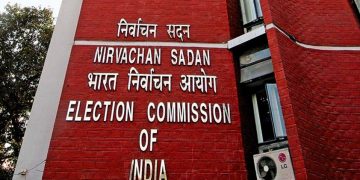Demand for desi powdered urea high in the region as it’s easy to mix with water and merge with soil
Sambalpur: Farmers in western Orissa are irritated over short-supply of indigenous variety nitrogen fertilizer (powder urea). Urea is much in demand in farms, and farmers want only the desi urea while the district agricultural department is supplying the granular imported variety.
The country is not self-sufficient in inorganic fertilizers. The domestic urea available in small balls is more popular with farmers, also as their delivery is quicker. “India is not self-sufficient in production of inorganic fertilizers. Urea is the key chemical fertilizer used by farmers to increase yield. Problem is we do not produce enough of it to meet farm requirements. Also, the granular variety is more effective in increasing the yield,” said Pradosh Kumar Samal, deputy director of agriculture here.
The district agriculture department has undertaken an awareness blitz to educate farmers in the use of neem-coated granular type imported from abroad. It claims the effects of the granular variety are long-standing and better for crops and that this also is user-friendly. However, the farmers are not convinced.
“This is a man-made crisis. We prefer powder type urea as it is easy to mix with water and soil, and gives faster results. The department supplies this to border districts like Rayagada, Balasore and Nuapada where there is less demand. From there, we learn, it is sent to neighbouring states at a premium,” said Ashok Pradhan, convener of Western Orissa Farmers’ Organisation Coordination Committee. The district agriculture department has taken note of the farmers’ aversion to imported urea and launched a campaign to educate them on use of the granular and indigenous urea in a 40:60 ratio. The department is also persuading farmers to use neem-coated urea as its use will be 10—15 per cent less compared to indigenous variety.
The district agriculture department has taken note of the farmers’ aversion to imported urea and launched a campaign to educate them on use of the granular and indigenous urea in a 40:60 ratio. The department is also persuading farmers to use neem-coated urea as its use will be 10—15 per cent less compared to indigenous variety.
India is the world’s largest importer of fertilizers. It imports nearly 10 million tonnes of urea annually from abroad — primarily from Oman, China and Iran. That represents one-third of its domestic chemical fertilizer consumption. Since urea is produced out of natural gas, which India lacks, the dependence on imports is long-standing. India produced 24.5 million tonnes of urea in the last fiscal and consumed 32 million tonnes during the period.
Urea is highly subsidized by the central government. This works out to 60—70 per cent on the international price of urea. This gap is reimbursed to the supplier (foreign or domestic) by the government. Food and fertilizer subsidy accounts for over 12 per cent of the Union Budget.
Unlike their foreign counterparts, domestic producers of urea face delays in getting reimbursements from the government. This, producers say, is a disincentive for them to scale up production and enhance installed capacity. Foreign suppliers do not face this problem. They get their payments instantly. Further, due to gas scarcity and the difficulty in gas pricing, fertilizer production in India does not inspire confidence for fresh investment. As a result, no fresh investment has happened in this sector for the past two decades.
Sisir Mishra, OP






































